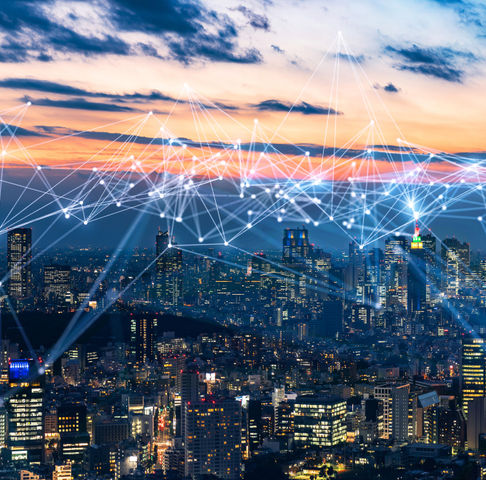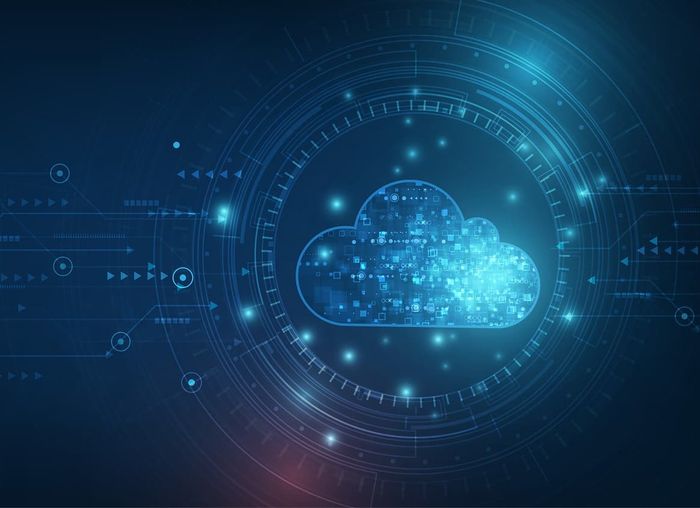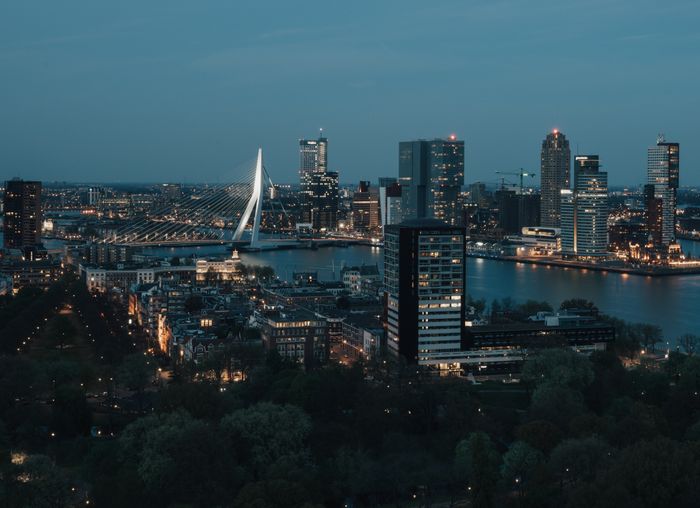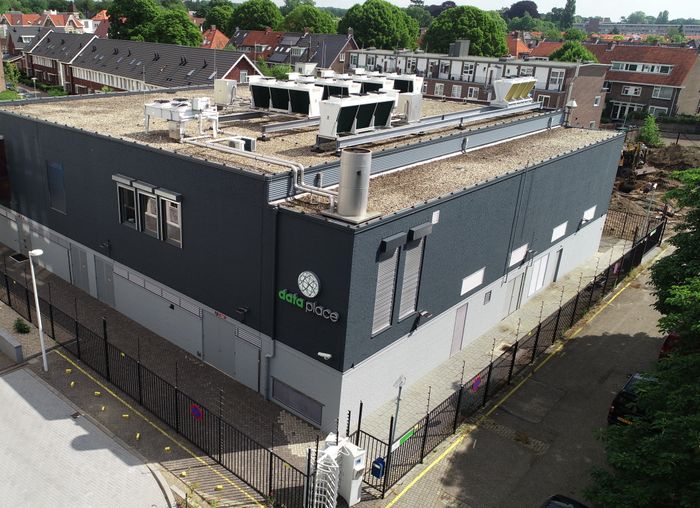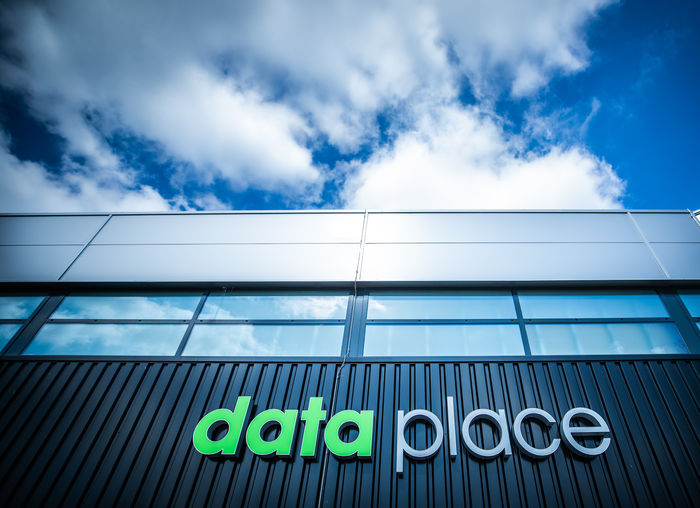Digitization makes life easier in many ways and also creates numerous new opportunities and business models for companies. However, the increasing demand for high-quality IT facilities and the growth of the global data mountain also impact the ecological footprint left by the digitization of society. With the growth in the number of data centers, energy consumption and the associated CO2 emissions are also increasing.
Fortunately, many data centers are now making efforts towards sustainability, a concept that is more than just a buzzword these days. The major challenge is to manage the growth of digital traffic while simultaneously progressing in energy conservation and the efficient utilization of available resources. In this article, you will learn how it is possible to create a digital infrastructure that is both sustainable and future-proof. This way, care for the environment and excellent IT performance will go hand in hand.
The challenges of a sustainable digital infrastructure
Traditional data centers are seen as significant energy consumers. They are massive halls filled with numerous servers. Particularly, the giants among data centers consume as much energy as all households in a medium-sized city combined. For a long time, the solution to the increasing demand for IT services was primarily sought through building new data centers. However, this approach is no longer beneficial if the Netherlands aims to seriously pursue the ambitious climate goals set by the government in the medium term.
Another issue is that sustainability is a rather vague concept. The term is used in various ways and not always tied to concrete objectives. This often leads to 'greenwashing': showcasing certain aspects of sustainability without properly weighing the costs and effects of sustainability measures. However, effective sustainability measures strive to find a balance between human well-being (people), the environment (planet), and prosperity (profit). Additionally, it doesn't help that traditional parties and organizations often present the choice between productivity/costs and sustainability as an 'either-or' situation, whereas in reality, it's increasingly becoming a 'both-and' scenario.
Furthermore, there's a certain 'invisibility factor' at play in the IT realm. Especially when working in the cloud, we are not always well aware of the impact our actions in the digital world have on the 'real' world. Behind every video we watch online, every video conference we host, and every file we share with our colleagues, there are servers and storage systems consuming space, energy, and resources. Especially in the pre-sustainability era, but even today, energy-efficient use of devices and IT resources is sometimes neglected. Many servers in data centers or server rooms, for example, run all day and night but use barely 15% of the available capacity and computing power.
How to make your digital infrastructure sustainable and future-proof?
How to make your digital infrastructure sustainable and future-proof? In this day and age, stopping or significantly reducing our data consumption is neither a feasible nor a desirable option. However, persistently building large data centers is not a viable solution either. Fortunately, modern technology offers more and more starting points for the development of sustainable and future-proof digital infrastructures.
1. Energy savings through virtualization and power management
Virtualization is a potent response to the proliferation of servers in data centers or internal server rooms of companies. Server virtualization divides a hardware server into various virtual machines that act as full-fledged and independent servers. The result? Hardware is used more efficiently, and you can easily allocate more resources to a server. Applications also work based on the applications they run on. Container technology takes an extra step towards efficient utilization of IT resources.
Virtualization leads to a reduction in energy consumption and lower cooling costs. Moreover, the technology is excellently tailored to cloud computing and is therefore extremely future-proof.
Power management is another way to save energy without compromising on performance. Most companies experience peak and off-peak periods in digital traffic. Power management allows data centers to switch to a saving mode during off-peak traffic. Proper power management ensures that a data center runs at full throttle only when there is a real need for it.
2. Better alignment of supply and demand
Better aligning supply and demand is another way to make your digital infrastructure more sustainable and future-proof. Think, for example, of a better spread of workloads by using local data centers in an environment where temporary extra capacity is needed.
Pallas Agterberg, Challenge Officer at Alliander and a member of the Council for the Environment and Infrastructure (LEAP), provides an example in an article on the TNO Netherlands website: 'Imagine: you know that the Dutch national football team is playing a match that millions of people want to watch. Then you also know that the demand for capacity at internet providers like Ziggo and KPN will temporarily skyrocket. Now you have separate servers for that. However, you could easily make the servers that work for businesses during the day available for other purposes in the evening. For streaming, for instance.'
3. Efficient utilization of renewable energy
It is expected that a large part of the digital infrastructure in the near future will be powered by renewable energy sources such as solar, wind, and water. It is possible to align cloud services with these and thus place certain cloud services in locations where wind or sun are abundant. Think, for example, of Southern Europe, North Africa, or a location near a wind farm in the North Sea.
4. Creating awareness among employees
There is still much to gain in terms of sustainability awareness. Provide employees with information on making energy-conscious choices. Or encourage departments to make sustainable purchases in the hardware, lighting, and insulating material domains.
5. Capturing and utilizing residual heat
Heat is an important byproduct of industrial complexes and data centers. Unfortunately, it often goes to waste. It's a shame, because you can easily reuse residual heat and convert it into fuel that powers your digital infrastructure. You avoid the burning of additional gas and move a step closer to an IT infrastructure that fits within the ideal of the circular economy.
The contribution of Eurofiber Cloud Infra
The contribution of Eurofiber Cloud Infra Do you have the ambition to take significant steps towards making your digital infrastructure more sustainable and future-proof? Eurofiber Cloud Infra is here to help.
- Our data centers utilize Dynamic Free Cooling (DFC). Dynamic Free Cooling is a control concept for air conditioning systems combined with hybrid indirect free cooling in precision air conditioning units, fan-controlled dry coolers, and speed-controlled central pump systems.
- All these system components are centrally controlled to minimize total energy consumption, depending on the ambient temperature.
- Eurofiber Cloud Infra has energy-efficient UPS installations that achieve high efficiency at low load. They are so efficient that they are listed on the EIA (Energy Investment Allowance) energy list.
- We recycle and reuse residual heat in the data center and have an agreement of intent to use the residual heat from one of our data centers to heat a nearby residential area.
- The data halls of Eurofiber Cloud Infra have 'cold corridors.' This ensures a separation between cold and warm airflows, preventing short-circuiting and thus mixing. This also means that there is only a need to cool a corridor instead of the entire space. All data centers of
- Eurofiber Cloud Infra run on green energy. This includes not only the energy needs of the servers but also cooling, lighting, office spaces, etc., so the energy consumption of the entire data center."

ContactOur experts
Would you like to learn more about our services?
We are happy to assist you further.
